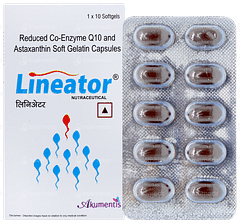Hyperparathyroidism
Hyperparathyroidism is a condition where the parathyroid glands produce excessive amounts of parathyroid hormone (PTH), leading to high blood calcium levels. This can cause various health issues, including bone thinning, kidney stones, and other complications. There are three main types of hyperparathyroidism: primary, secondary, and tertiary, each with its causes and characteristics.
Last updated on : 22 Apr, 2025
Read time : 12 mins

Overview of Disease
Hyperparathyroidism is a medical condition that occurs when one or more of the parathyroid glands in the neck produce excessive amounts of parathyroid hormone (PTH). PTH helps regulate calcium levels in the blood by promoting its absorption from food. It also releases calcium from bones and reduces its excretion by the kidneys. When PTH levels are elevated, it leads to an increase in blood calcium levels, which can result in various health problems. Understanding the causes, symptoms, and types of hyperparathyroidism is essential for early detection and appropriate treatment.
What Is Hyperparathyroidism?
Hyperparathyroidism is a disorder characterised by the overproduction of parathyroid hormone (PTH) by the parathyroid glands. This excess PTH leads to elevated calcium levels in the blood, a condition known as hypercalcemia. Many people with hyperparathyroidism may not experience symptoms initially. Common signs and symptoms include bone pain, kidney stones, nausea, and fatigue.
The parathyroid glands, small glands near the thyroid in the neck, maintain calcium balance in the body. When these glands become overactive, they disrupt the delicate balance of calcium, leading to the development of hyperparathyroidism. To better understand this condition, it is essential to explore the different types of hyperparathyroidism and their underlying causes.
Key Factors about Hyperparathyroidism
| Category | Details |
| Also Referred as | Parathyroid-related hypercalcemia, Osteoporosis - hyperparathyroidism, Bone thinning - hyperparathyroidism |
| Commonly Occurs In | Women more than men, especially in older adults (50s, 60s, and beyond) |
| Affected Organ | Parathyroid glands, bones, kidneys, blood vessels, heart |
| Type | Primary, Secondary, Tertiary |
| Common Signs | Muscle weakness, fatigue, depression, bone and joint pain, increased thirst and urination, constipation, nausea, vomiting |
| Consulting Specialist | Endocrinologists, Thyroid and Parathyroid Surgeons |
| Treatement Procedures | Surgery (parathyroidectomy), medications, lifestyle changes |
| Managed By | Calcimimetics, bisphosphonates, hormone replacement therapy, vitamin D and analogues, phosphate binders |
| Mimiciking Condition | Other health problems such as osteoporosis, kidney stones, or chronic fatigue syndrome |
Types of Hyperparathyroidism
Hyperparathyroidism is classified into three main types: primary, secondary, and tertiary. Each type has distinct causes and characteristics that set them apart.
Primary Hyperparathyroidism: This common type of hyperparathyroidism occurs when one or more parathyroid glands overproduce PTH autonomously. The most frequent cause of primary hyperparathyroidism is a benign tumour called an adenoma, which develops in one of the parathyroid glands. Less common causes include enlargement of the glands (hyperplasia) or, in rare cases, parathyroid gland cancer.
Secondary Hyperparathyroidism: This type of hyperparathyroidism is typically a consequence of chronic kidney disease. When the kidneys fail to filter waste and excess fluids effectively, it leads to an imbalance in calcium and phosphate levels. In response to these changes, the parathyroid glands increase PTH production to compensate, resulting in secondary hyperparathyroidism.
Tertiary Hyperparathyroidism: This form of hyperparathyroidism develops in individuals who have had long-standing secondary hyperparathyroidism. In tertiary hyperparathyroidism, the parathyroid glands become permanently overactive, even if the underlying cause of secondary hyperparathyroidism is addressed. This type of hyperparathyroidism can persist even after treating the underlying kidney disease.
Symptoms of Hyperparathyroidism
Hyperparathyroidism can present with a wide array of symptoms that vary in severity from person to person.
One of the most common symptoms is fatigue and muscle weakness, which many patients report experiencing.
Additionally, individuals with hyperparathyroidism may struggle with depression and memory problems, including difficulty concentrating and mood changes.
Bone and joint pain are also frequently reported, as high levels of calcium in the blood can lead to weakened bones and painful joints.
Digestive issues such as nausea, vomiting, constipation, and abdominal pain are not uncommon.
Patients may also experience increased thirst and urination due to elevated blood calcium levels.
In some cases, excess calcium in the urine can result in the formation of kidney stones.
Lastly, cardiovascular issues like high blood pressure and heart disease have been linked to hyperparathyroidism.
While these symptoms can be indicative of hyperparathyroidism, it's important to note that the condition can have various underlying causes.
Causes of Hyperparathyroidism
Hyperparathyroidism is caused by the overproduction of parathyroid hormone (PTH). There are three main types of hyperparathyroidism, each with its own set of causes.
Adenoma or Hyperplasia: Primary hyperparathyroidism is usually due to a benign tumour (adenoma) or hyperplasia (enlargement) of one or more parathyroid glands.
Vitamin D Deficiency or Kidney Failure: Secondary hyperparathyroidism occurs in response to low blood calcium levels. It is often caused by vitamin D deficiency, kidney failure, or other conditions that affect calcium metabolism.
Chronic Kidney Failure: Tertiary hyperparathyroidism develops from long-standing secondary hyperparathyroidism, particularly in patients with advanced kidney failure.
Understanding the underlying cause of hyperparathyroidism is crucial for determining the appropriate course of treatment and management.
Risk Factors
Several factors can increase the risk of developing hyperparathyroidism:
Age: Individuals over 60 years old are more likely to be diagnosed with hyperparathyroidism.
Gender: Women are more frequently affected by the condition compared to men.
Radiation Therapy: Exposure to radiation in the neck area can increase the risk of developing hyperparathyroidism.
Nutritional Deficiencies: Severe and prolonged deficiencies of vitamin D and calcium can contribute to the development of hyperparathyroidism.
Genetics: Some cases of hyperparathyroidism may have a hereditary component.
Medications: The use of lithium has been associated with an increased risk of hyperparathyroidism.
Complications
Hyperparathyroidism can lead to several significant complications, primarily due to the elevated levels of PTH and the resulting high blood calcium levels.
Bone Complications: Bone complications are common, as high PTH levels cause bones to release more calcium into the blood. This leads to bone thinning and weakening, often resulting in osteoporosis and an increased risk of fracture.
Kidney Complications: Excessive calcium in the blood can also lead to kidney complications, such as the formation of kidney stones. In severe cases, it can cause kidney damage or failure.
Cardiovascular Issues: High blood calcium levels are associated with cardiovascular conditions. This includes high blood pressure and certain types of heart disease, although the exact cause-and-effect link is not fully understood.
Gastrointestinal and Neurological Symptoms: Other complications of hyperparathyroidism include gastrointestinal issues such as nausea, vomiting, and constipation. It can also cause neurological symptoms like depression, memory problems, and confusion.
Severe Hypercalcemia: In rare cases, severe hypercalcemia can result in serious life-threatening conditions. This includes rapid kidney failure, loss of consciousness, coma, or serious heart rhythm abnormalities.
Prevention of Hyperparathyroidism
Preventing hyperparathyroidism can be challenging because it often results from intrinsic glandular problems or other underlying health conditions. However, there are some general preventive measures and risk factor considerations that can help reduce the likelihood of developing this condition.
Healthy Diet: Maintaining a healthy and balanced diet rich in calcium and vitamin D can help prevent secondary hyperparathyroidism caused by dietary deficiencies.
Radiation Exposure: Avoiding excessive radiation exposure to the head and neck can also reduce the risk of developing hyperparathyroidism.
Genetic Risk Monitoring: Individuals with a family history of hyperparathyroidism or certain genetic syndromes (e.g., multiple endocrine neoplasia I) should be aware of their increased risk and undergo regular monitoring.
Managing Underlying Conditions: Control kidney disease and vitamin D deficiency to prevent secondary and tertiary hyperparathyroidism.
Early detection and appropriate management of hyperparathyroidism are essential for preventing complications and ensuring the best possible outcomes.
Diagnosis & Tests
Diagnosing hyperparathyroidism typically involves a combination of clinical evaluation, laboratory tests, and imaging studies.
Blood Tests: Laboratory tests are crucial, with blood tests measuring PTH and calcium levels being the most important. High PTH levels, along with high blood calcium and low phosphate levels, are indicative of primary hyperparathyroidism.
Additional Lab Tests: Additional tests may include vitamin D levels, kidney function tests, and urine calcium measurements.
Imaging Tests: Imaging studies can help locate enlarged parathyroid glands and assess the extent of bone involvement. These may include neck ultrasounds, sestamibi scans, CT scans, or MRIs.
Bone Density Test: In some cases, bone mineral density tests may be performed to evaluate the degree of bone loss caused by hyperparathyroidism.
A thorough clinical evaluation, including symptom review, physical examination, and risk assessment, is vital for an accurate diagnosis. Combining laboratory findings, imaging results, and clinical presentation enables healthcare providers to diagnose hyperparathyroidism and determine the best treatment for each patient.
Treatment & Management
The management of hyperparathyroidism, particularly primary hyperparathyroidism (PHPT), involves several approaches depending on the severity and symptoms of the condition.
- Surgical Treatment: Surgery, specifically parathyroidectomy, is the definitive treatment and can cure PHPT in most cases. It involves removing the affected parathyroid gland(s) or a portion of them. This procedure can be performed as an outpatient surgery and is highly effective in normalising calcium levels. It helps to improve bone density and alleviate symptoms.
- Regular Monitoring: For patients with mild PHPT and no significant symptoms, watchful waiting may be recommended. This involves regular monitoring of calcium levels, bone density, and kidney function. This approach is suitable if calcium levels are only slightly elevated and kidney function is normal. It is also appropriate when there are no significant bone density issues or other symptoms.
- Medication: In cases where surgery is not an option, medication can be used to manage hyperparathyroidism.
Medication of Hyperparathyroidism
Medications play a crucial role in managing primary hyperparathyroidism (PHPT) for patients who are unable or unwilling to undergo surgery.
- Calcimimetics: Cinacalcet is a calcimimetic that mimics calcium, effectively reducing parathyroid hormone (PTH) secretion. It is particularly beneficial for patients who are not candidates for surgery.
- Bisphosphonates: These medications help prevent calcium loss from bones and manage osteoporosis, though they do not directly address the underlying parathyroid gland dysfunction.
- Hormone Replacement Therapy (HRT): HRT improves bone mineral density and reduces bone turnover in postmenopausal women with asymptomatic PHPT.
- Vitamin D and Analogues: These supplements help correct vitamin D deficiency and manage secondary hyperparathyroidism, especially in patients with chronic kidney disease (CKD).
- Phosphate Binders: These medications help control hyperphosphatemia in secondary hyperparathyroidism, reducing phosphate levels in the blood.
- Thyroid Hormone Therapy: In cases where hyperparathyroidism is associated with thyroid dysfunction, thyroxine may be prescribed to maintain normal thyroid hormone levels and prevent complications.
When to See a Doctor?
If you have symptoms of hyperparathyroidism, like fatigue, muscle weakness, or bone pain, consult a doctor. Elevated calcium levels in routine blood tests may need further investigation. If you have a history of kidney stones or fractures at a young age, discuss hyperparathyroidism with your doctor.
People with chronic kidney disease should be monitored for secondary hyperparathyroidism. Early diagnosis and management are essential to prevent complications and enhance quality of life. Your doctor can test parathyroid hormone and vitamin D levels to diagnose hyperparathyroidism and plan treatment.
Key Takeaways
Hyperparathyroidism is a condition characterised by excessive secretion of parathyroid hormone (PTH) from the parathyroid glands.
The three main types of hyperparathyroidism are primary, secondary, and tertiary.
Common symptoms include fatigue, muscle weakness, bone pain, and kidney stones.
Diagnosis involves blood tests to measure calcium, PTH, and vitamin D levels, as well as imaging studies to localise abnormal parathyroid glands.
Treatment options include surgery (parathyroidectomy), and medication such as calcimimetics, bisphosphonates, and vitamin D supplementation.
Early diagnosis and appropriate management can prevent complications and improve overall health outcomes in patients with hyperparathyroidism.
FAQs
What kinds of food can worsen hyperparathyroidism?
While no specific foods directly cause hyperparathyroidism, certain dietary habits like consuming high-phosphate, refined, or salty foods and natural calcium inhibitors may exacerbate the condition.
What causes the unpleasant symptoms of hyperparathyroidism?
Hyperparathyroidism leads to elevated blood calcium levels and calcium loss from bones. This causes symptoms such as bone pain, muscle weakness, gastrointestinal issues, and neurological disturbances.
What's the best treatment for hyperparathyroidism?
The most effective hyperparathyroidism treatment depends on the type and severity. Primary cases often require surgery, while secondary and tertiary cases focus on treating the underlying cause.
Can taking vitamin D help treat hyperparathyroidism?
Vitamin D supplementation alone is not an effective treatment for primary hyperparathyroidism. However, correcting vitamin D deficiency may be beneficial in managing secondary hyperparathyroidism.
How can I manage hyperparathyroidism symptoms?
To reduce hyperparathyroidism symptoms, maintain adequate hydration, engage in regular exercise, follow a balanced diet with appropriate calcium intake, and manage any underlying health conditions.
What calcium level suggests hyperparathyroidism?
Blood calcium levels above 10.5 mg/dL (2.6 mmol/L) on multiple occasions, along with elevated parathyroid hormone levels, usually indicate primary hyperparathyroidism.
Which blood tests are used to diagnose hyperparathyroidism?
Blood tests for diagnosing hyperparathyroidism include measuring serum calcium, parathyroid hormone, phosphorus, alkaline phosphatase, and vitamin D levels, along with kidney function tests.
Is hyperparathyroidism a serious condition?
Yes, if left untreated, hyperparathyroidism can lead to osteoporosis, kidney stones, cardiovascular problems, and neurological issues. This can significantly impact overall health and quality of life.
What is the life expectancy with hyperparathyroidism?
With proper treatment, most people with hyperparathyroidism have a normal life expectancy. However, severe untreated cases may slightly increase mortality risk.
Can hyperparathyroidism resolve on its own?
In most cases, hyperparathyroidism does not resolve spontaneously and requires medical intervention. However, mild cases may be monitored closely without immediate treatment.
References
Bilezikian, J. P., Bandeira, L., Khan, A., & Cusano, N. E. (2018). Hyperparathyroidism. The Lancet, 391(10116), 168-178. https://doi.org/10.1016/S0140-6736(17)31430-7
Clarke B. L. (2018). Epidemiology and Complications of Hypoparathyroidism. Endocrinology and metabolism clinics of North America, 47(4), 771–782. https://doi.org/10.1016/j.ecl.2018.07.004
Minisola, S., Gianotti, L., Bhadada, S., & Silverberg, S. J. (2018). Classical complications of primary hyperparathyroidism. Best Practice & Research Clinical Endocrinology & Metabolism, 32(6), 791-803. https://doi.org/10.1016/j.beem.2018.09.001
Taniegra, E. D. (2004). Hyperparathyroidism. American Family Physician, 69(2), 333-339. https://www.aafp.org/afp/2004/0115/p333.html
National Institute of Diabetes and Digestive and Kidney Diseases. (2017, May). Primary hyperparathyroidism. https://www.niddk.nih.gov/health-information/endocrine-diseases/primary-hyperparathyroidism
Yale Medicine. (2021). Hyperparathyroidism. https://www.yalemedicine.org/conditions/hyperparathyroidism
Wang, X., Yang, B., & Wang, X. (2020). Diagnosis and treatment of primary hyperparathyroidism: A review. International Journal of Endocrinology, 2020. https://doi.org/10.1155/2020/1078419
Insogna, K. L. (2018). Primary hyperparathyroidism. New England Journal of Medicine, 379(11), 1050-1059. https://doi.org/10.1056/nejmcp1714213
Walker, M. D., & Silverberg, S. J. (2018). Primary hyperparathyroidism. Nature Reviews Endocrinology, 14(2), 115-125. https://doi.org/10.1038/nrendo.2017.104
Check Related Salts
Browse Other Conditions
Latest health articles
Top Health Essentials




















Disclaimer
Top-Selling Medicines:
...View more
Top-OTC medicines:
...View more
Company
About UsHealth ArticleHealth StoriesHealth LibraryDiseases & Health ConditionsAyurvedaUnderstanding Generic MedicinesAll MedicinesAll BrandsNeed HelpFAQSecuritySubscribe
Registered Office Address
Grievance Officer
Download Truemeds
Contact Us
Our customer representative team is available 7 days a week from 9 am - 9 pm.
v4.10.0
2025 - Truemeds | All rights reserved. Our content is for informational purposes only. See additional information.
Our Payment Partners




































